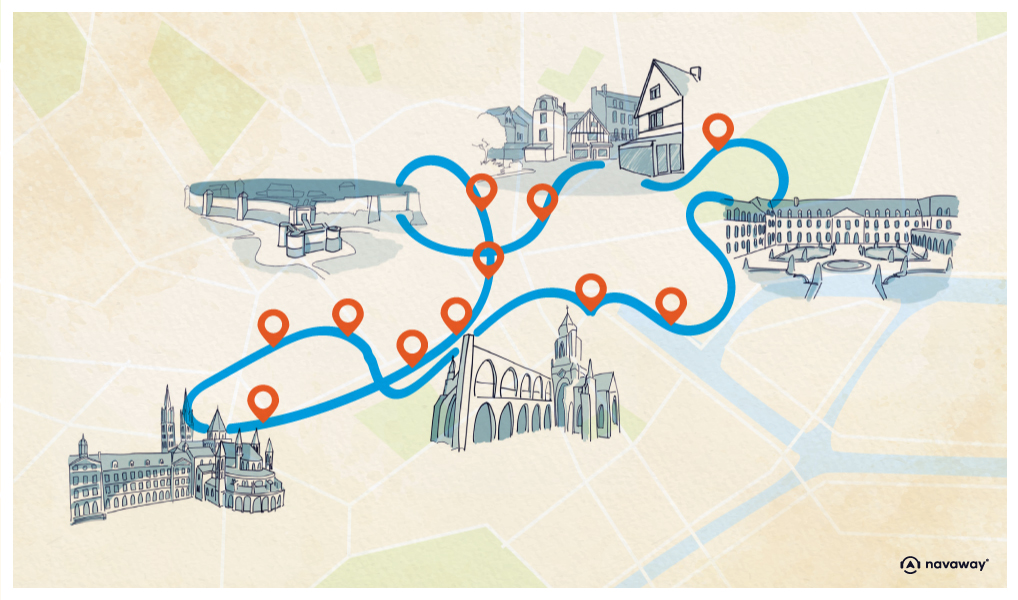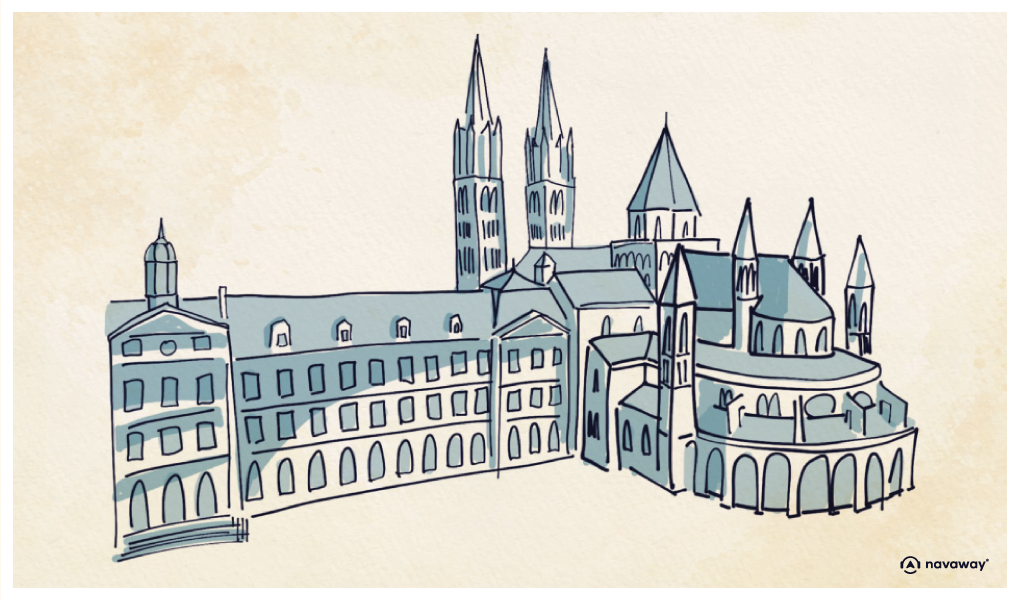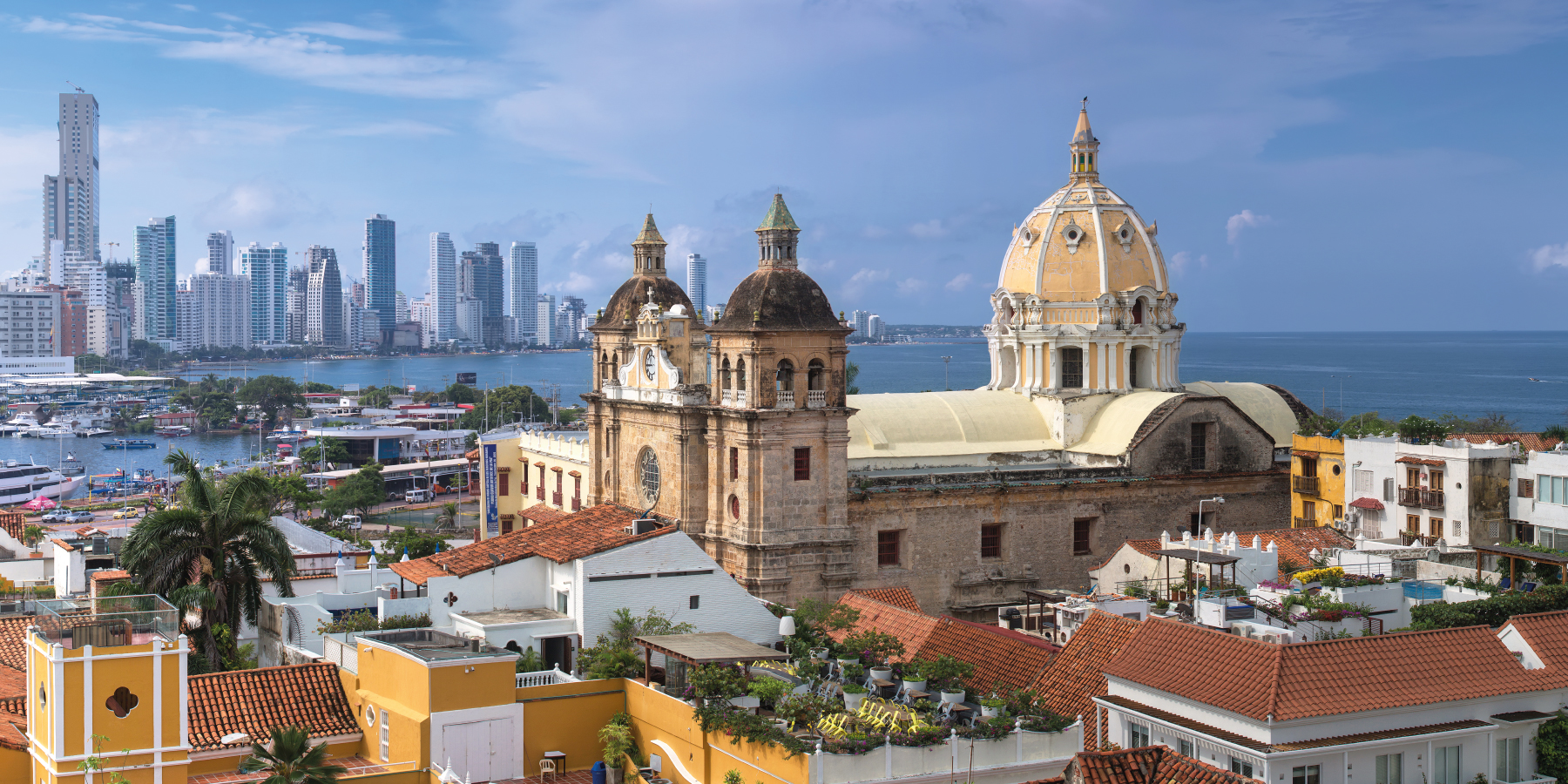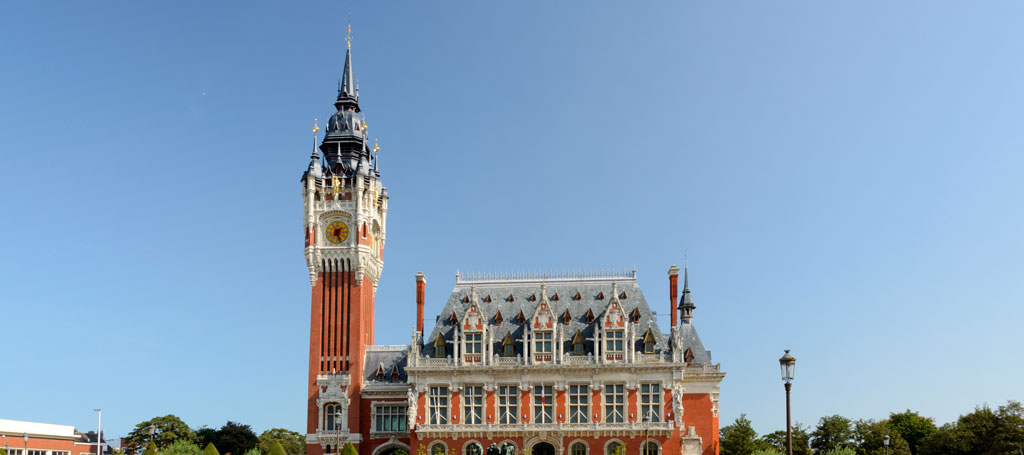
Men’s Abbey

This point of interest is available as audio on the tour: Visit Caen, Home of William and Matilda
Here, you stand on the Jean Marie Louvel esplanade, facing the impressive Men’s Abbey. Caen is home to two grand abbeys, this one and its female counterpart, the Ladies’ Abbey on the other side of the city. All this dates back to when William the Conqueror was still called William the Bastard. At the age of 22, he married Matilda of Flanders against the advice of the Pope! Indeed, he was opposed to their union on the grounds that they were too closely related. Admittedly, in 1049, it was not uncommon or controversial for cousins to marry each other. So William married Matilda, because it was politically convenient for them, given that the beautiful Matilda was also the niece of King Henry I of France. In 1053, the next pope, a shrewd man, finally agreed to the union, provided that the couple undertook to build 4 hospitals and 2 monasteries. They did just that, and almost a thousand years later, the town of Caen can still boast two magnificent abbeys, with each of them being buried in one!” The one before you is one of the finest examples of Norman Romanesque architecture. In fact, many English abbeys were inspired by it. This makes perfect sense when you consider that William, the beloved Duke of Normandy, became King of England in 1066! For the record, Norman offspring in England left traces of a strong French influence in their new home. They shipped stones from Caen, which they used in many of the country’s landmark buildings, including the Tower of London, Windsor Castle, Westminster Abbey, Canterbury Cathedral, and many more! However, let’s go back to the 11th century. Following the conquest of England, William was able to fund this major project quite easily, and it was soon completed. The construction of these two abbeys, even more so than the construction of the castle, created a new unity among the different residential centers and established a true city in Caen. Life developed around these religious centres, creating the districts of “Bourg l’abbé” to the west and “Bourg l’Abesse” to the east, respectively Burg of the Abott and Abess. Take a look at the complex, now divided into several parts. Right in front of you is Caen’s Town Hall, housed in the former 18th-century convent buildings, with the French flag flying on its façade. Behind its façade, lies a beautiful cloister with arcaded galleries framing a large formal garden. The garden was used as a playground when the building was converted into a high school in 1804. You can see the chevet of the Saint-Étienne abbey church on the right. It overlooks the abbey and houses the tomb of William the Conqueror. Desecrated by Protestants during the Wars of Religion, it was carefully renovated in the 17th century and consecrated again in 1626. During the Revolution, it was transformed into a temple dedicated to the worship of reason and the supreme being, a kind of civil philosophical cult launched in the 1790s. In 1801, when the Concordat was introduced, laying down new rules between the State and the various religions in France, the church was reopened for worship, but as a parish. The Abbey is open to the public outside of religious services, you can also take a guided tour to find out everything about it. However, the entrance is on the other side, on Monseigneur des Hamaux Square. If you visit the buildings, you can also see the ducal palace, built in the 14th century to house the abbey’s distinguished guests. It is now located on the other side of the street. Listed as a historic monument, it now houses a contemporary art centre. The former guards’ hall, which you will see next to the Town Hall on the left, was once a gymnasium and a military hospital. It is now used as the council’s deliberation room. The former bakery, the small 17th-century building opposite it, is now a museum dedicated to nature. The classical-style building on your left is the Petit Lycée, built in the 19th century which is now the headquarters of the national police force. As the years go by, our needs change, and the Men’s Abbey remains devoted to Caen, supporting it through the years.


Discover Caen with app
An interactive guide through the most beautiful streets, squares, and districts
22 fun audioguides full of historical facts, anecdotes, and legends





Comments